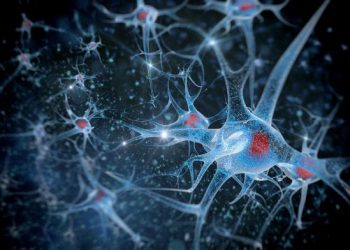The cancer cells can grow quickly and spread to other parts of the body. They usually don’t cause symptoms until the disease has advanced to a more advanced stage.
People with limited stage SCLC respond well to chemotherapy (using medications that kill cancer cells) and radiation therapy. New types of treatment are being studied for those with extensive stage SCLC that comes back after standard treatments.
Symptoms
A chronic cough that won’t go away is the main symptom of small cell lung cancer (SCLC). It usually occurs in the upper lungs and may spread to the chest wall, diaphragm and other organs. People who smoke or have a history of smoking have the highest risk for developing SCLC. Exposure to second-hand smoke and asbestos also increases the risk.
Many people with SCLC don’t have any symptoms or they get them only when the tumor reaches the late stages and begins spreading to other parts of the body. When that happens, the cancer is called extrapulmonary SCLC because it has spread from the lungs to other organs in the body. This type of cancer can affect the cervix, prostate, pancreas and bladder.
Doctors can diagnose this type of cancer by taking a sample of a lung tissue to test for cancer cells. They can also use CT scans to see if the cancer has spread beyond the lungs and to other organs. The stage of the cancer tells doctors how far it has spread and helps them plan treatment.
If the cancer hasn’t spread, doctors can treat it with chemotherapy and radiation therapy. They can also use hormones to help control the cancer and reduce symptoms.
When the cancer is at a later stage, doctors may recommend surgery if it hasn’t spread too much. Doctors can remove a small amount of the tumor and nearby lymph nodes.
Surgical removal of the cancer is usually followed by chemotherapy. This is the most common treatment for people with this cancer, but it’s not always possible. The tumors can grow back after the first treatment. If the cancer returns, the doctor may give more chemotherapy or radiation therapy.
Sometimes this type of cancer can cause a disease called paraneoplastic syndromes. These are problems that develop because of an abnormal response by the immune system to the cancerous tissue. People with this condition can experience numbness, weakness or confusion.
Other symptoms can include weight loss, fatigue and difficulty breathing. If you have any of these symptoms, talk to your doctor right away.
Diagnosis
Small cell carcinoma (SCLC) is a fast-growing cancer that forms in the tissues of the lung. The lungs are a pair of cone-shaped breathing organs that are located in the chest. They bring oxygen into the body when you breathe in and take out carbon dioxide when you exhale. The lungs have two sections called lobes, each divided into a number of smaller areas called alveoli. These alveoli are filled with blood and tiny air sacs. A thin membrane called the pleura covers the lungs and other organs inside the chest.
The cells that form SCLC are very different from the cells of non-small cell cancers. They are much smaller and appear blue under a microscope. They also grow very quickly and may spread to other parts of the body.
Doctors diagnose this type of cancer by taking a tissue sample from the lung. This is usually done with a needle that is guided through the lungs using CT scans. They can also take a sample of the tumor with a robot-assisted biopsy device or through open surgery.
Symptoms of this cancer include coughing up blood or wheezing. It can also affect other parts of the body, including the heart and brain.
This cancer often occurs in heavy smokers and is very rare in people who never smoked. It can also be difficult to distinguish from other cancers, especially carcinoid tumors, adenocarcinoma, and primitive neuroectodermal tumors like Ewing’s sarcoma.
If your doctor suspects that you have this cancer, they will ask about your past smoking history. They will also do a physical exam. Other tests that your doctor may order include blood tests, imaging exams, and a lung function test. They may also order a positron emission tomography/CT or PET/CT scan. This is an imaging test that measures the amount of certain chemicals in your body, such as glucose and oxygen. These chemicals are released by the body when cancer cells break apart.
This is an advanced procedure that allows your doctor to see the tumor more clearly. Your doctor can also use this procedure to check whether the tumor has spread. Doctors can also use it to look for other types of cancer that may be present in your body, such as mesothelioma.
Treatment
Small cell carcinoma is a type of lung cancer. It is usually caused by a combination of factors. These may include genetic changes, cigarette smoke, and other substances that can cause cancer. The chemicals in cigarette smoke damage cells in your lungs. They may also affect genes that control how your cells grow. This can lead to uncontrolled growth of cancer cells that form tumors. The cancer can spread to other parts of your body.
Your doctor will diagnose small cell carcinoma based on your symptoms and medical history. Your doctor will perform a physical exam and take X-rays of your chest. Your doctor may also ask you about your past health problems and family history. Your doctor will test for a certain gene change that may increase your risk of getting this cancer. Your doctor may order blood and urine tests to check your overall health and to see if you have other diseases.
The lungs are a pair of cone-shaped breathing organs in your chest. They bring oxygen into the body and take out carbon dioxide. They are lined with a thin membrane called the pleura. There are two lobes in each lung and smaller tubes called bronchi that lead to them. Small air sacs called alveoli make up the inside of your lungs.
Small-cell carcinoma starts in the lungs’ lining and grows rapidly. It can also spread to the nearby tissues and the lymph nodes in the chest. Cancer cells can also reach your brain, bones, liver, and adrenal glands.
If the tumor is small and has not spread, your doctor may suggest surgery. This is often followed by chemotherapy and radiation therapy. Chemotherapy is used to kill cancer cells and stop them from growing. Radiation therapy is a treatment that uses high-energy radiation to destroy cancer cells and the area around them.
You may need to undergo further testing if your tumor is large or has spread. Your doctor will probably repeat the tests used to diagnose the tumor and find out the stage of your cancer. These might include CT scans and MRI. Some types of immunotherapy drugs may also be helpful. You should eat a healthy diet and get regular exercise. You can get support from family and friends, and join a cancer support group.
Prevention
Smoking is the leading cause of lung cancer and the fastest-growing form, small cell carcinoma. Even being around secondhand smoke makes you more likely to get it. The longer you smoke and the more cigarettes you smoke, the greater your risk. People who don’t smoke can also get it, but not nearly as often. The other common forms of lung cancer are non-small cell carcinoma, which are named for how they look under a microscope; these include squamous cell carcinoma and adenocarcinoma. These types of cancer grow more slowly and are less aggressive than SCLC. Less than five percent of all lung cancers are lung carcinoid tumors, which grow more slowly and don’t spread as easily as other types of cancer.
Researchers believe that something in tobacco smoke damages DNA, making cells grow faster than they should. This damage may be due to chemicals in tobacco smoke called carcinogens. It’s possible that this damage affects genes, including oncogenes and tumor suppressor genes, which normally control how fast cells grow and divide. Changing these genes leads to cancer.
In addition to smoking, there are other things that can increase your chances of getting lung cancer, such as being exposed to certain chemicals at work or living in an area where radon is found. Radon is an odorless, colorless gas that develops when uranium in soil and rocks breaks down. It can get into your home through the ground and build up in your house. This is more of a problem in older houses, but it can happen in any home.
Lung cancer can be prevented in many ways, such as not smoking or avoiding being around people who do smoke. It’s also important to get regular screenings for lung cancer, especially if you’re a smoker.
ACTC’s cancer specialists are dedicated to improving the outcomes for patients affected by lung cancer and other diseases. We specialize in early diagnosis and treatment so that patients have the best chance of survival. Our team of experts includes doctors, nurses, pharmacists, social workers and other professionals who work together to improve the quality of care for our patients.









